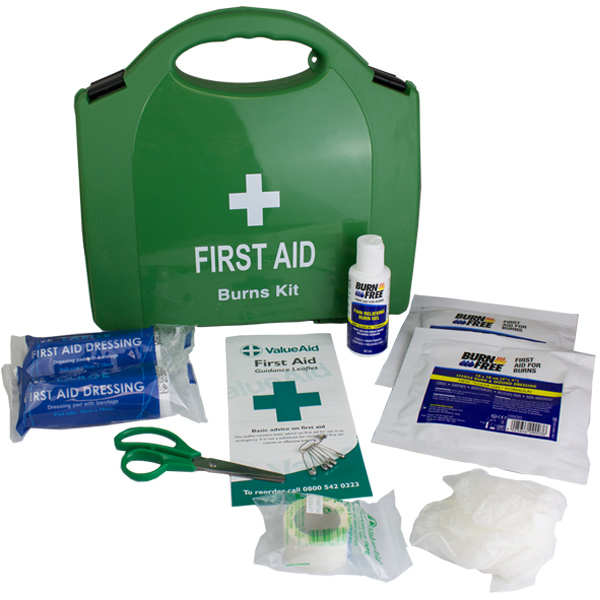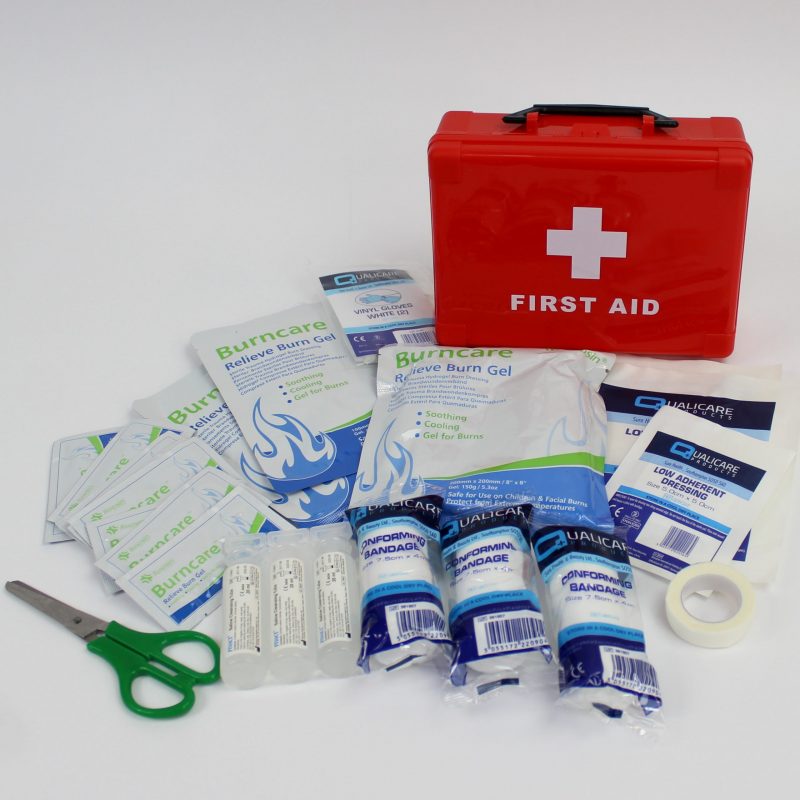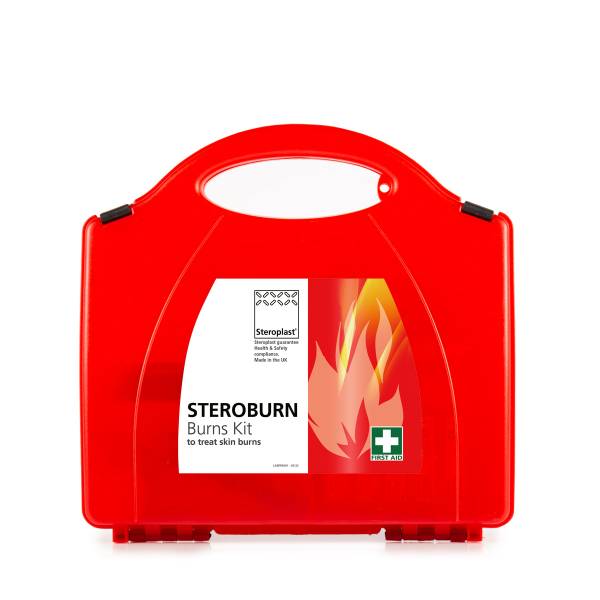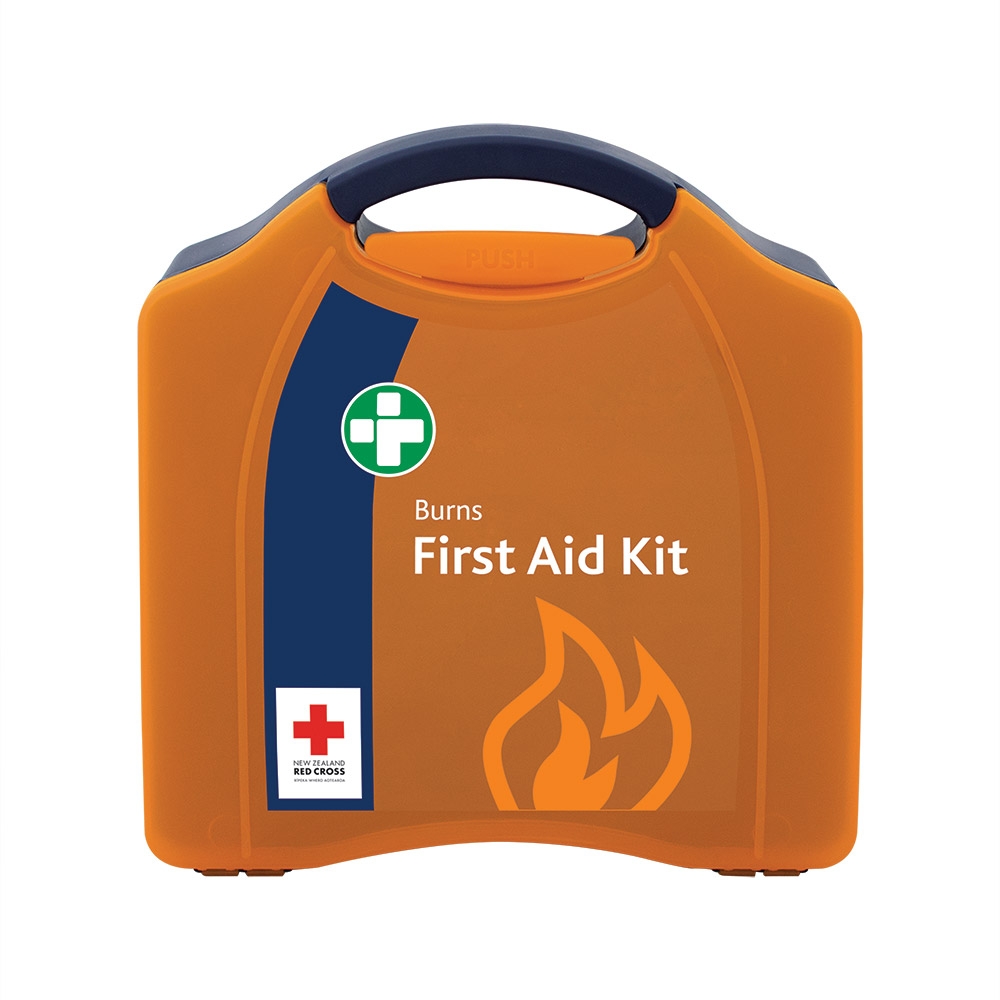I. Understanding Burn First Aid Kit

Burns are a common injury that can be caused by exposure to heat, chemicals, electricity, or radiation. They can vary in severity, and it’s important to understand the different types of burns in order to provide the appropriate first aid.
A. Types of Burns
There are three main types of burns: first-degree, second-degree, and third-degree. First-degree burns are the mildest and only affect the outer layer of the skin, causing redness and mild pain. Second-degree burns are more serious and involve damage to the second layer of skin, resulting in blisters and severe pain. Third-degree burns are the most severe, extending into the deeper tissues and potentially causing numbness or a charred appearance.
B. Importance of First Aid
Proper first aid is crucial in the treatment of burns as it can help minimize the damage, reduce the risk of infection, and promote faster healing. Immediate first aid can also help alleviate pain and prevent the burn from worsening. Therefore, it’s essential to be prepared with the necessary knowledge and supplies to provide effective first aid for burns.
C. Assessing the Severity of Burns
When assessing the severity of a burn, it’s important to consider the depth of the injury, the size of the burn area, and the location of the burn. For larger or more severe burns, it’s best to seek medical attention immediately. However, minor burns can usually be treated with burn first aid kit at home.
II. Essential Items in a Burn First Aid Kit
A. Sterile Dressings and Bandages
Sterile dressings and bandages are essential for covering and protecting burns from further injury or infection. They help to keep the burn clean and provide a barrier against external contaminants. It’s important to have a variety of sizes and shapes to accommodate different types of burns.
B. Burn Cream or Gel
Burn cream or gel is specifically formulated to provide relief for burns by cooling the skin and reducing pain and inflammation. It can also help promote healing and prevent scarring. When applying burn cream or gel, it’s important to follow the instructions on the packaging and avoid using too much product.
C. Non-Adhesive Gauze Pads
Non-adhesive gauze pads are ideal for covering burns without sticking to the wound, which can cause further damage and discomfort. They provide a protective layer while allowing the burn to breathe and heal. Additionally, having a pair of scissors in the first aid kit can make it easier to cut the gauze to the desired size.
III. Additional Supplies for Burn First Aid

A. Aloe Vera Gel or Lotion
Aloe vera is known for its soothing and healing properties, making it a valuable addition to a burn first aid kit. Applying aloe vera gel or lotion to a burn can help reduce pain, inflammation, and promote skin regeneration.
B. Burn Jel and Burn Dressing
Burn jel and burn dressing are specifically designed to provide immediate relief for burns by cooling the skin and protecting against infection. They are particularly useful for treating larger burns and can be a valuable addition to a comprehensive burn first aid kit.
C. Cooling Gels or Sprays
Cooling gels or sprays are useful for providing immediate relief for burns by lowering the skin’s temperature and alleviating pain. They can be applied directly to the burn to help reduce discomfort and promote healing.
IV. How to Use a Burn First Aid Kit
A. Step-by-Step First Aid Procedures
When using a burn first aid kit, it’s important to follow the proper steps for treating a burn. This typically involves cleaning the burn, applying burn cream or gel, covering the burn with sterile dressings, and monitoring the healing process. It’s essential to familiarize yourself with the first aid procedures and techniques to provide effective care for burns.
B. Tips for Treating Different Types of Burns
Depending on the severity and type of burn, there are specific considerations and tips for providing first aid. For example, first-degree burns can often be treated with cold water and over-the-counter burn cream, while second-degree burns may require the use of non-adhesive gauze pads and burn dressing. It’s important to be aware of the differences in treating various types of burns.
C. Recognizing when to Seek Medical Help
While minor burns can often be treated at home with burn first aid kit, it’s crucial to recognize when a burn requires professional medical attention. Signs that a burn may be more severe and in need of medical help include blistering, charring of the skin, or burns on sensitive areas such as the face, hands, or genitals. Additionally, seeking medical help is important if the burn is caused by chemicals, electricity, or if the individual is experiencing excessive pain or fever.
V. Importance of Replacing and Restocking the Burn First Aid Kit

A well-stocked burn first aid kit is essential for providing effective and immediate care for burns. However, it’s crucial to regularly replace and restock the items in the kit to ensure its effectiveness and reliability. In this article, we will delve into the importance of replacing and restocking the burn first aid kit, including the shelf life and expiry dates of items, regular inspection and maintenance, and updating the kit for changing needs.
A. Shelf Life and Expiry Dates of Items
One of the primary reasons for replacing and restocking the burn first aid kit is to ensure that the items are within their shelf life and have not expired. Many items in a first aid kit, such as burn cream, sterile dressings, and medications, have an expiration date. Expired items may not be as effective in providing relief and preventing infection, and in some cases, they may even cause harm. Regularly checking the expiry dates of the items in the kit is essential to maintain the kit’s efficacy.
B. Regular Inspection and Maintenance
Another crucial aspect of maintaining a burn first aid kit is to conduct regular inspections and maintenance. This involves checking the condition of the items, ensuring that they are not damaged or compromised in any way. Sterile dressings and bandages should remain sealed and undamaged, while burn cream or gel should not show signs of leakage or deterioration. Additionally, it’s important to keep the kit in a suitable environment, away from extreme temperatures or moisture, to preserve the integrity of the items.
C. Updating the Kit for Changing Needs
As burn care practices and technologies evolve, it’s important to update the burn first aid kit to meet changing needs. Newer and more advanced products may become available, offering improved benefits for treating burns. It’s also important to consider the specific needs of the individuals who may require burn first aid, such as children, the elderly, or individuals with specific medical conditions. By updating the kit and adjusting its contents to align with current best practices, the effectiveness of the first aid provided can be optimized.
In conclusion, replacing and restocking the burn first aid kit is essential for maintaining its effectiveness and ensuring that it can provide optimal care for burns. By paying attention to the shelf life and expiry dates of items, conducting regular inspections and maintenance, and updating the kit to meet changing needs, the first aid kit can remain a reliable resource for prompt and effective burn care.


